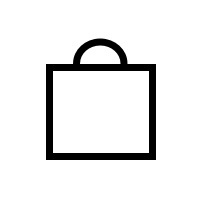In a way, I’ve grown up with K-beauty. My mom is Korean, after all, and my earliest lessons, from how to apply eyeliner to DIY cucumber facials, were all passed down from her. I got my first professional facial with my mom — at a strip mall storefront in a Korean enclave of southern California, packed with middle-aged Korean women all far too well-to-do for that part of town. Though the pink-uniformed facialists were all speaking a language I only knew to the extent that its vocabulary involved survival (eating, sleeping), I entrusted them for two hours with my 19-year-old face.
Back then, I didn’t realize that my mother was establishing the foundation for good skin care habits for her daughter. In truth, being the know-it-all teen that I was, I ignored most of her early edicts (“Cover your face from the sun! Don’t scrub so hard!”). Of course, like most things mom said, I now see the wisdom in them and often regret that I didn’t heed her warnings earlier.
But it’s never too late to change your skin, as I’ve learned in the last few years since I’ve embraced K-beauty wholeheartedly. I’ve always thought that at a certain point, it would be about slowing the deterioration of all the damage you’ve incurred in your younger years, and to some extent that’s true. But I’ve also seen a reversal — an actual reversal, not just a slowing down — of some of my skin issues since I’ve incorporated some important K-beauty lessons into my regimen. And lest you think I’m talking about K-beauty products, let me be clear: Most of the K-beauty lessons I’ve learned have nothing to do with specific beauty products or brands — they’re practices anyone can incorporate.
K-beauty Lesson 1: Hydrate, hydrate, hydrate
What I used to do: Dry it out, dry it out, dry it out. At least, that’s what I thought I had to do to kill pimples and sop up the oil on my nose.
What I do now: From hydrating toners to serums with moisture-binding ingredients to sleeping masks, I ensure that my skin —both the oily and dry parts of it — are constantly hydrated. For me, hydration is a multi-step process and not just, say, a thick moisturizer. My facial cleanser doesn’t contain SLS to prevent stripping; I immediately kick-start the hydration process with a facial mist or hydrating toner as soon as I finish cleansing; and I ensure my serums contain humectants (which draw water into the skin) like aloe, honey, and hyaluronic acid.
I never realized how dehydrated my skin was (because how oily your skin is is different from the amount of water in your skin), and once I started really hydrating it, 365 days a year, I’ve noticed that my fine lines and creases have plumped up. In fact, my first big-time wrinkle by my mouth (and no, it’s not a “smile line”) has all but disappeared.
K-beauty Lesson 2: Do the double

What I used to do: The single. With a foam cleanser. And probably one with sodium laureth sulfates (since it made my face feel all squeaky clean).
What I do now: Sure, everyone double cleanses now. Even the all-American brand Neutrogena is advertising double cleansing. But double cleansing is relatively new to me — I was incorporating hydrating toners and all manner of sophisticated serums long before I was double cleansing. Now that I know better, I don’t know how I lived without it. The squeaky clean feeling has always been the Holy Grail for me, but I never thought that I could feel clean — truly clean — and hydrated and soft, without a hint of tightness in my skin. Today, I’ll alternate between oil cleansers and micellar waters as my first step to remove makeup, depending on how my skin feels, and then cleanse with a non-SLS cleanser. It’s a vital step in my regimen that has helped my skin to look plumped and taeng taeng, despite age-related volume loss.
K-beauty Lesson 3: Pat it all in
What I used to do: What every American woman did before 2010: swipe, smear, rub.
What I do now: Pat at every single step of my routine. I pat in the shower (Blithe Patting Splash Mask, I’m looking at you), I pat after I sheet mask, I even pat after I wash my face (just till it’s no longer dripping — what, you think I have all day?). Not only does patting prevent me from pulling on my delicate skin, it helps my skin care absorb faster, which is important since, yes, I am one of those with a 10+ step skin care regimen.
I’ve extended this genius patting trick to my body lotion — seriously, even the thickest, gooiest body cream absorbs in seconds. I even pat on my foundation, because nothing gets my foundation to “melt” into my skin as seamlessly as patting it in with my fingers — not a Beauty Blender, nothing. (You’ll also be saving product.) Try it. You’ll be hooked.
K-beauty Lesson 4: A facial can cover a multitude of sins
What I used to do: Um, nothing.
What I do now: Stayed up a bit too late? Went to town on that bag of cheddar-jalapeño chips? Got into a screaming fight with your bestie? Yeah, a facial’s got you covered.
Any time stress comes calling (read: every day), our skin shows it. Maybe not immediately, but it will. In those unusually dark circles. In that not-that-time-of-the-month pimple. In a sallowness that no amount of strobing will alleviate.
I know — a facial? Really? Shouldn’t I be going to a dermatologist, a psychologist, an extreme SoulCycle session at the very least?
Perhaps. But for me, regular facials have changed my life, not just my complexion. Facials are a must for most Korean women, as important a part of their skin care regimen as an essence. For me, my facial is a time for me to unwind, breathe deep, de-stress. It’s my meditation time, a time when I clear my thoughts of looming deadlines and personal anxieties. A time when I can relish in the extended facial massage by my Korean facialist, when contours are carved out and lymphatic drainage the order of the day, when kneading knuckles and palms and fingertips are the only sensations I need to focus on. For me, this is the ultimate in luxury. And the ensuing endorphin rush has probably not only done more to decrease my stress (and thereby increase my immune response, which affects every cell in my body, skin cells included) but, I suspect, is more responsible for my post-facial glow than any cream mask my facialist can apply.
K-beauty Lesson 5: When in doubt, sheet mask it
What I used to do: If I was lucky (and remembered), I’d sheet mask once or twice a month.
What I do now: My most recent K-beauty lesson was a doozy. I detailed my experience in this post, but let me sum it up for you. After a massive breakout — the likes of which I hadn’t experienced since law school — I halfheartedly decided to give LJH’s new Tea Tree Soothing Mask a go, totally not expecting anything other than an opportunity to soothe my depressed mood. After two sessions with the mask, spaced a day apart, and not having done anything differently in my routine, not only had my half dozen pimples decreased significantly in size and redness, well on their way to healing, the throbbing, painful cystic monster (pimple just makes it sound so benign) on my chin simply … stopped. Ceased. Halted. It died. And that never happens.
Lesson learned. Sheet masks aren’t a luxury. They’re a necessity. Imagine if I sheet masked once or even twice a week? Every day? Forget the dermatologist, psychologist, or SoulCycle — it’s enough to make me feel like I wouldn’t need my facialist anymore.
Well, almost. Because no one can knead the stress out of you like a middle-aged Korean woman.
Anna M. Park is the editor of beauty and travel blog Styleunderpressure.com.
Sorry, we couldn't find any posts. Please try a different search.
RELATED














2 Comments
That's awesome Joan! It seems good skin care habits transcend cultures and generations! :)
It has taken me over 70 years - well, let's say over 50 years of conscious skin care ritualizing -- for me to discover that this blonde (now gray) blue-eyed Jewish girl from Philadelphia is actually as Korean as can be. I, too, hydrate, pat, mask and pat some more and my skin has never been softer, smoother and glowier. In a word, ipo!